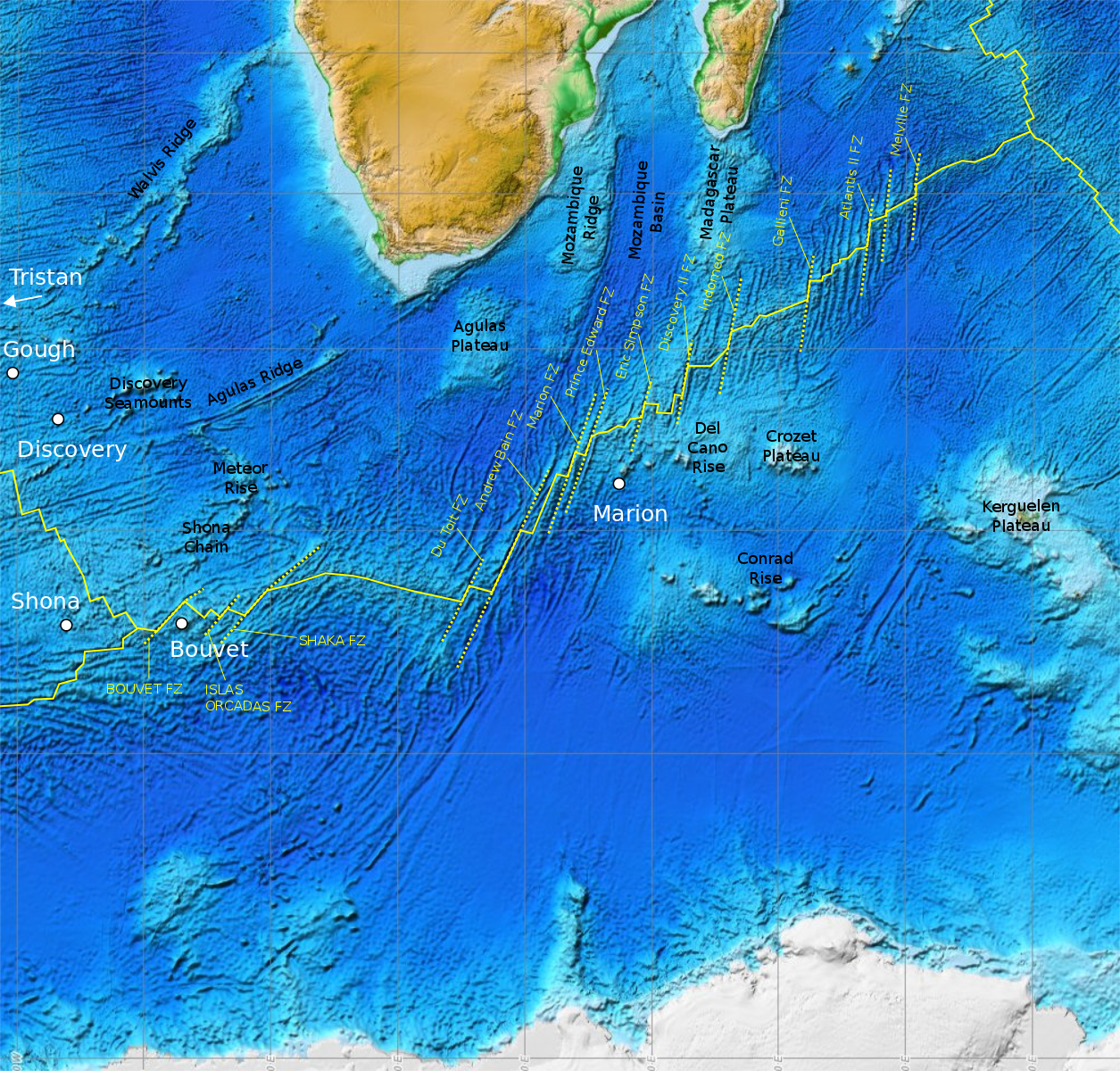Prince Edward Fracture Zone on:
[Wikipedia]
[Google]
[Amazon]
 The Prince Edward Fracture Zone (PEFZ) is one of the
The Prince Edward Fracture Zone (PEFZ) is one of the
 The Prince Edward Fracture Zone (PEFZ) is one of the
The Prince Edward Fracture Zone (PEFZ) is one of the fracture zone
A fracture zone is a linear feature on the ocean floor—often hundreds, even thousands of kilometers long—resulting from the action of offset mid-ocean ridge axis segments. They are a consequence of plate tectonics. Lithospheric plates on e ...
s located on the Southwest Indian Ridge in the Indian Ocean
The Indian Ocean is the third-largest of the world's five oceanic divisions, covering or ~19.8% of the water on Earth's surface. It is bounded by Asia to the north, Africa to the west and Australia to the east. To the south it is bounded by ...
between Africa and Antarctica. The PEFZ is located west of Prince Edward Islands
The Prince Edward Islands are two small uninhabited islands in the sub-Antarctic Indian Ocean that are part of South Africa. The islands are named Marion Island (named after Marc-Joseph Marion du Fresne, 1724–1772) and Prince Edward Islan ...
.
The history of seafloor spreading between Africa and Antarctica since the breakup of Gondwana
Gondwana () was a large landmass, often referred to as a supercontinent, that formed during the late Neoproterozoic (about 550 million years ago) and began to break up during the Jurassic period (about 180 million years ago). The final sta ...
can be traced using magnetic anomaly lineations between the Mozambique Channel
The Mozambique Channel (french: Canal du Mozambique, mg, Lakandranon'i Mozambika, pt, Canal de Moçambique) is an arm of the Indian Ocean located between the Southeast African countries of Madagascar and Mozambique. The channel is about l ...
and the seafloor of Dronning Maud Land
Queen Maud Land ( no, Dronning Maud Land) is a roughly region of Antarctica claimed by Norway as a dependent territory. It borders the claimed British Antarctic Territory 20° west and the Australian Antarctic Territory 45° east. In a ...
. Before the 1980s it was assumed that this spreading occurred continuously for 80 million years, from the Cretaceous to present, along the fracture zones flanking the mid-ocean ridge. In the mid-80s new magnetic lineations discovered near the PEFZ made it clear that a change in the spreading direction occurred 74–56 Ma. As the direction of spreading changed so did the phase.
The largest offset along the Southwest Indian Ridge () is located west of the PEFZ and east of the Du Toit Fracture Zone (45°S, 35°E; 53°S, 27°E). During the Late Cretaceous this offset was smaller than .
Antarctic Bottom Water flows north through the PEFZ.
References
Notes
Sources
* * Fracture zones Landforms of the Indian Ocean {{tectonics-stub